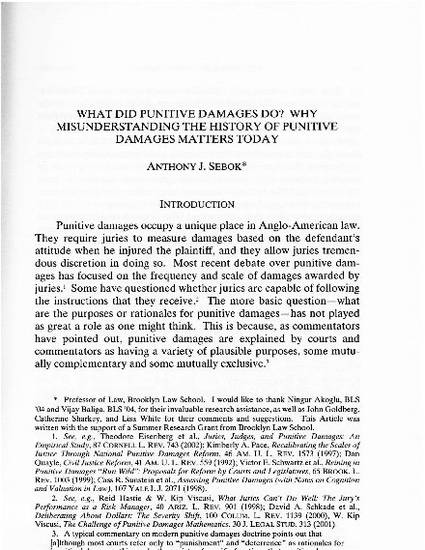
In 2001 the Supreme Court, in Cooper Industries, Inc. v. Leatherman Tool Group, Inc. suggested that, although modern punitive damages punish, in earlier times they almost exclusively compensated for noneconomic damages that were ignored by a less progressive legal system. This article demonstrates that the historical foundation upon which the Supreme Court bases its argument is groundless. In the Eighteenth and Nineteenth Centuries punitive damages served a number of functions, but none of them were to provide the noneconomic damages identified by the court. Instead, as the article shows, the sort of injuries for which punitive damages were once demanded would still be uncompensated by contemporary doctrines of compensatory damages. This article uses the court's confused analysis in Cooper to demonstrate that the dichotomy upon which it relied - that, in the law of punitive damages, punishment and compensation are mutually exclusive categories - is neither historically accurate nor analytically necessary.
- punishment,
- damages,
- history,
- compensation
Available at: http://works.bepress.com/anthony-sebok/2/
